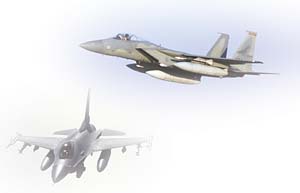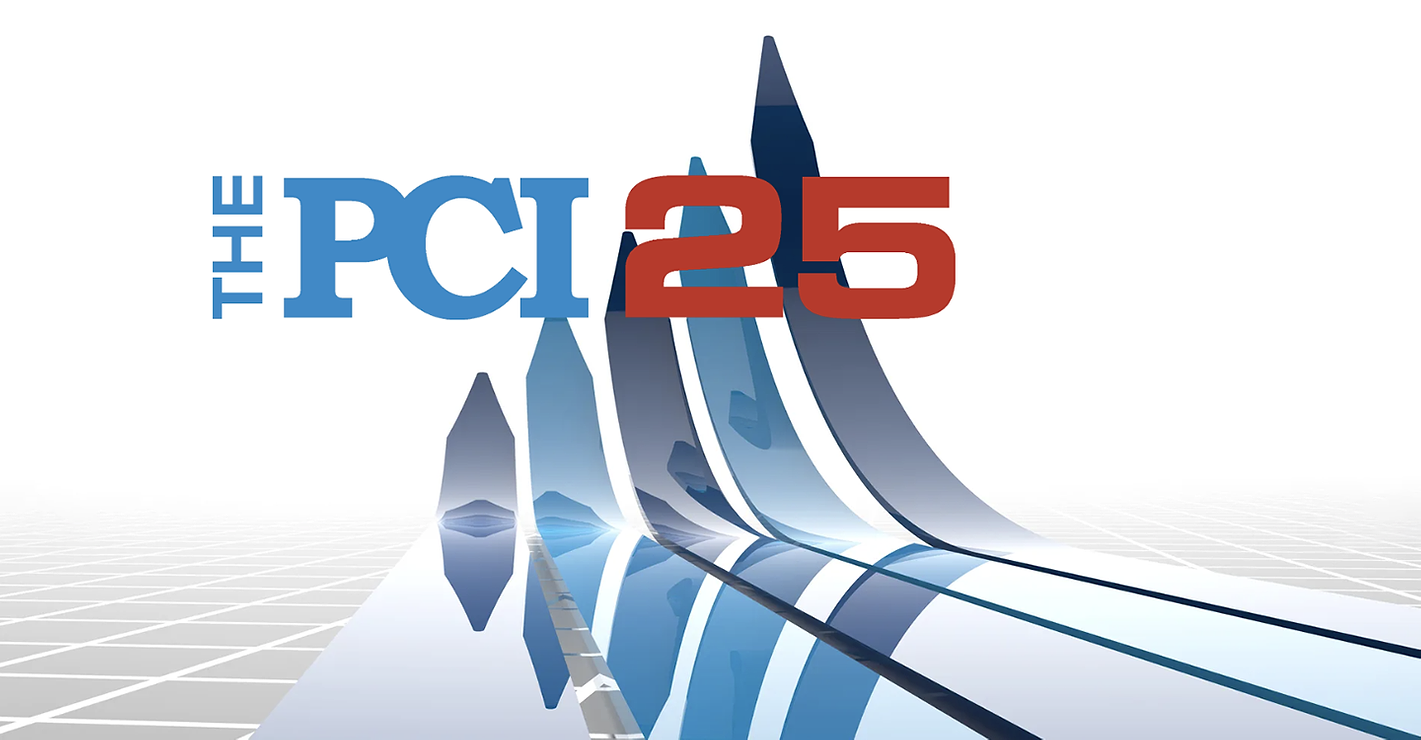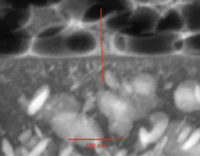Proven Non-Chromated Technology


One of the most historically pervasive uses of materials containing chromate is in the treatment of aluminum with chromate conversion coatings (CCC) and chromated primers (CP) (Figure 1). The CCC process prepares aluminum for the application of paint and also provides a corrosion barrier. Chromic acid, from the CCC, accounts for approximately twice the chrome waste as chromate primers while repainting aircraft.2 Environmental, safety and health risks associated with the use of hexavalent chromium are being reduced and eliminated through different systems, using partial chrome or total non-chrome technology.

Replacements for Chromated Conversion Coatings
Replacements can be divided into two categories: non-chromated conversion coatings (NCCC) and non-chromated surface pretreatments (NCSP) that do not convert the substrate (Figure 2). Initially, both of these non-chromated replacements for the chromate conversion coating looked promising because they reduced the chrome waste by two-thirds, as opposed to only a one-third reduction when replacing the chromated primers.
PreKote Surface Pretreatment (SP)
As a response to the environmental concerns around pollution prevention and clean technologies, in 1996 the Department of Defense (DoD) began testing replacements for chromate conversion coatings as a safer alternative.3 Four products were tested; three were non-chromated conversion coatings, and one was a non-chromated surface pretreatment. Surprisingly, within six months of the DoD’s testing efforts, only one of the four evaluated products, the NCSP, tested successfully as a suitable replacement for CCC. The NCSP product, PreKote Surface Pretreatment (PreKote SP), also eliminated other hazardous chemicals including etchants, solvents and alkali washes.Testing of the PreKote SP technology included flexibility, filiform corrosion, adhesion and 2000-hour salt spray on painted panels proving performance that surpassed the standard chromated methods (Figure 3).4 The first F-16 was painted in 1997, and the test was completed in 1998 showing excellent results from PreKote SP. In 2000 the Technical Order (TO) for repainting F-16s was changed to include specifications to use PreKote SP as a NCSP. Since that time, over 800 F-16s have been painted with the PreKote SP process. To date not a single aircraft has been returned to depot for a paint- or corrosion-related issue. The early aircraft have completed their six-year cycle and are returning to depot for standard maintenance overhaul. Currently, all F-16s and all training aircraft are engaged in using a NCSP with 16 U.S. Air Force bases. These planes have been deployed all over the world, most recently for utilization during Iraqi Freedom.
In 1996, USAF testing also began on T-37s, and T-38s, with the first plane fully painted with PreKote SP technology the same year. In 2001, testing was complete and the TO was changed to authorize the use of PreKote SP as a NCSP. To date over 100 T-37s and T-38s have been painted using the PreKote SP technology. There are several USAF testing programs still underway. In 2000, a five-year testing program was started with two C-130s and two A-10s, with the goal of possibly adding PreKote SP to Technical Order 1-1-8, the general Technical Order, which will authorize the use of PreKote SP on any USAF plane. Testing also includes using PreKote SP technology on magnesium wheels, exterior missile silos,5 and marine applications all showing positive results.
The PreKote SP technology contributed to the USAF eliminating numerous hazardous products, as well as saving on disposal costs. With the PreKote SP, finishers required less time to prepare, monitor and paint the aircraft, reducing personal protective equipment and other chromium-related requirements. PreKote SP is not EPA regulated under 40 CFR 433 and can be used on substrates including aluminum, magnesium, cadmium, steel, composite materials, anodized and non-anodized metals. It is important to recognize that the PreKote SP is not a conversion coating, does not permanently change the surface of the substrate, and is designed to be an integral part of the coating system. PreKote SP-treated surfaces cannot pass a 168-hour salt spray corrosion test. As stated earlier, PreKote SP is not designed to be used as a stand-alone product but in conjunction with a coating. The PreKote SP-treated panels that have been painted perform as well or better (as a system), as panels that have been prepared with CCC and painted, including a 3000-hour salt spray test. Identified by the EPA as pollution-prevention technology, their report concluded that PreKote SP reduce(s) worker exposure to solvents and other toxic chemicals traditionally used in the painting operation.6
Based on all of the accumulated success with the PreKote SP technology, the USAF contacted the EPA Water Division for clarification on the Metal Finishing effluent guidelines (40 CFR 433) and how they pertain to PreKote SP. The report states since PreKote SP is not a chemical conversion coating, the use of the product does not automatically trigger categorical industrial user status under the metal finishing effluent guidelines.7 This is significant because the guidelines are time consuming and costly to administer and follow. Other reports have found that PreKote SP generates about half of the amount of wastewater as compared to the wastewater previously generated.8
USAF performed a time analysis study for all aircraft prepared using the PreKote SP process in 2001. This study showed a time saving of 35% per aircraft.9 In addition to time savings, The Joint Group for Pollution Prevention (JGPP) estimates a cost avoidance of up to $2.23 per square foot of surface area treated just by eliminating the chromic acid.10

Non-Chromated Primers
First-generation non-chromated primers (NCP) were designed to be used in conjunction with the chromate conversion coating (CCC). Because the chromates in the CCC provided the majority of the protection, these first NCP, by themselves, required little corrosion protection. There were successes with this combination, and this system did reduce chrome waste by one third, however, it still generated hazardous waste from numerous sources, and is still regulated under 40 CFR 433 (Figure 4).
Chrome-Free Systems
In the effort to completely eliminate chromates in aircraft painting, non-chromate conversion coatings were developed and tested with the early non-chromated primers. In theory, the NCCC would provide the needed corrosion protection as well as eliminate chrome waste; however, finding systems with this combination has proven difficult. In addition, any chemical conversion is still regulated under 40 CFR 433. Hazardous waste can also still be generated during the application of the NCCC. As with the CCC, the NCCC is restricted to specific substrates by nature of the conversion. This makes it difficult to find a system that can be used on the entire aircraft (Figure 5).
Another attempt was to combine non-chromated surface pretreatments (NCSP) and early generation NCP. However, since NCSP do not convert the substrate, and are not designed to work with the older generations of non-chromated primers, there were no successes. The NCSP relies on superior adhesion and flexibility, as well as the corrosion-inhibiting properties of the paint system, to successfully protect the substrate. It was not until recently that a new generation of NCP was developed that provided equal corrosion protection to the original chromated primers (Figure 6).

The combination of the new NCP and the NCSP, on the other hand, is proving to be a viable, total non-chrome solution for the industry. This system combines the corrosion efficiency of the new generation of NCP, with the flexibility, adaptability and safety of NCSP (PreKote SP). Extensive laboratory and recent field testing has been showing that this complete non-chrome solution provides ample corrosion protection and superior paint adhesion. In addition, it is not regulated under 40 CFR 433, can be used on most substrates and does not contain any chrome waste or generate additional hazardous waste (Figure 8). The success with PreKote SP as a NCSP, as well as others, is paving the way for the industry to begin shifting to total non-chromated systems.

Total Non-Chrome Future
A recent development in the non-chromated primers has exhibited an ideal non-chrome paint system. Not only is the system passing extensive laboratory testing but it is also being field-tested.For more information on this system, contact Pantheon Chemical Co., 225 West Deer Valley Road, No. 4, Phoenix,
AZ 85027; phone 888/824.2918; or visit www.pantheon chemical.com.
This paper was presented at the Aerospace Coatings Removal and Coatings Conference sponsored by the Department of Defense, Colorado Springs, May 2003.

References
1 President Bill Clinton, “Executive Order 12856” 19932 Calculation based on the concentration of chromate atoms within the chromated conversion coating required for conversion versus the concentration of chromate atoms within the chromated paint required to coat the same surface area.
3 U.S. Army Environmental Center (USAEC), U.S. Army Center for Health, Promotion and Preventive Medicine (USACHPPM), U.S. Air Human System Center (HSC/OEBQ), Naval Facilities Engineering Service Center (NFESC), 1998. “Air Quality Management Using Pollution Prevention: A Joint Service Approach,” 62.
4 Buchi, Richard H.; Patterson, Ken; and Gowers, Clyde J. 1998. “Non-Chromate Conversion Coating,” (USAF Ogden Air Logistics Center, Science and Engineering Laboratory, 1998) 3
5 Patterson, Wayne. Department of the Air Force. “PreKote Testing on Silo (Snow Shovel).” Memorandum to Bruce Fong & Denis Huff.
6 Boornazian, Linda; and Smith, Linda. U.S. EPA Office of Water. “Regulatory Determination for the PreKote Surface Preparation Process,” Memorandum to Water Division Directors, Regions 1-10, April 2003.
7 Boornazian, 6.
8 Bohme, Lee. U.S. EPA Region 9. “PreKote,” Memorandum to EPA Regional Pretreatment Coordinators, March 19, 2003.
9 United States Air Force, Idea Evaluation and Transmittal, October 12, 2000
10 Joint Group on Pollution Prevention, “Nonchromate Aluminum Pretreatments Project Number: J-00-OC-016” March 2003
Looking for a reprint of this article?
From high-res PDFs to custom plaques, order your copy today!




